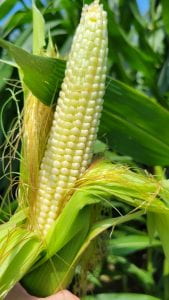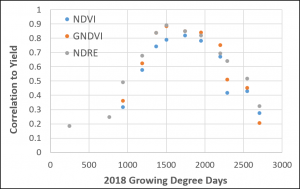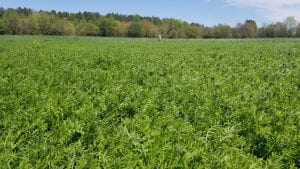
A corn ear that has pollinated and is in the R2 ( blister) stage.
As we enter the grain fill period, with some of our fields already at R2 (blister stage) or R3 (milk stage), it is important to keep stress down. Fields still at R1 or R2 (mid-May planting dates) may have the most to lose as kernels are being pollinated and start to fill. In past field trials, we have observed that yield correlates the best between about R2-R4 (from drone imagery, see below), so while there isn’t much you can do to improve yield, you can certainly do your best to maintain it by managing irrigation wherever it is needed.

Vegetation indexes and their correlation to yield over the corn growing season.


